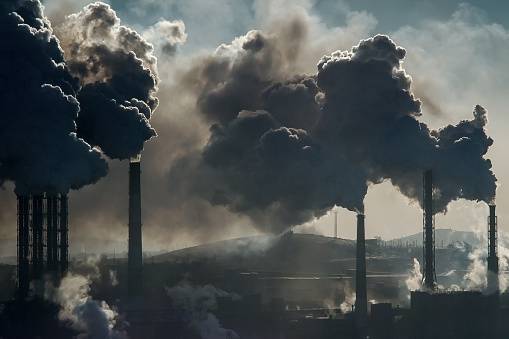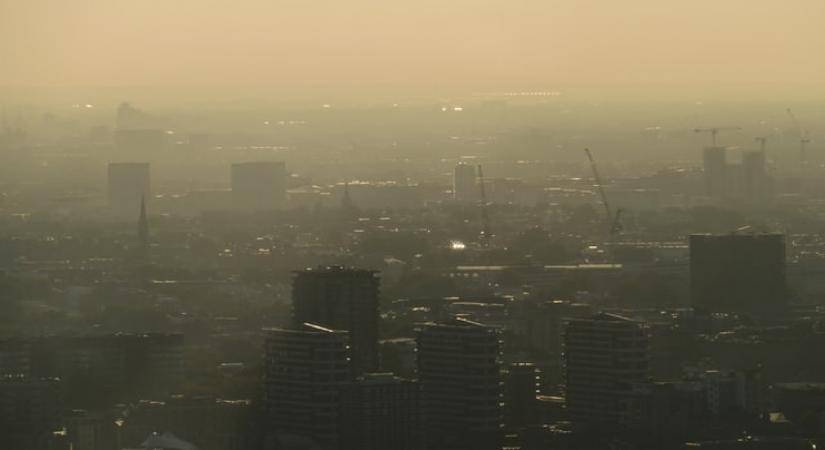Ambient air pollution, which refers to air in normal circumstances, was responsible for 4.5 million deaths in 2019, up from 4.2 million deaths in 2015 and 2.9 million in 2000….reports Asian Lite News
More than 6.6 million people died due to air pollution in 2019, a new study published on Tuesday estimated, with India contributing the highest share at 1.67 million, or 17.8% of such premature deaths.
Overall, according to a study in the Lancet Planetary Health, nine million people died to pollution, a number unchanged since the last analysis in 2015. The nine million fatalities represent one in six deaths worldwide.
Water pollution was responsible for 1.36 million premature deaths, lead exposure leading to another 900,000 and toxic occupational hazards added a further 870,000 premature deaths, the report said.
Ambient air pollution, which refers to air in normal circumstances, was responsible for 4.5 million deaths in 2019, up from 4.2 million deaths in 2015 and 2.9 million in 2000.
The report mentions that India made efforts against household air pollution, most notably through the Pradhan Mantri Ujjwala Yojana programme, but still had the world’s largest estimated number of air pollution related deaths.
“India has developed instruments and regulatory powers to mitigate pollution sources but there is no centralised system to drive pollution control efforts and achieve substantial improvements. In 93% of India, the amount of pollution remains well above WHO guidelines of 10 µg/m3,” it said.
According to the report, air pollution is most severe in the Indo-Gangetic Plain, where topography and meteorology concentrate pollution from energy, mobility, industry, agriculture, and other activities. Burning of biomass in households was the single largest cause of air pollution deaths in India, followed by coal combustion and crop burning. Population-weighted mean exposure to ambient air pollution peaked in India at 95mg/m3 in 2014, was reduced to 82mg/m3 by 2017, but more recently has been rising slowly again.

Of the 1.67 million deaths due to air pollution in India, most — 0∙98 million — were caused by high PM2.5 pollution. Another 0.61 million were due to household air pollution, the report said, adding that the world’s highest ambient PM2.5 levels — on a population-weighted average — are seen in India, closely followed by Nepal.
PM2.5 pollution refers to the high concentration of ultra-fine particles that are typically emitted during combustion — these particles are able to reach deep within lungs and enter the bloodstream, leading to cardiovascular diseases.
“The health impacts of pollution remain enormous, and low- and middle-income countries bear the brunt of this burden. Despite its enormous health, social and economic impacts, pollution prevention is largely overlooked in the international development agenda,” said Richard Fuller, lead author, in a statement.
“Attention and funding has only minimally increased since 2015, despite well-documented increases in public concern about pollution and its health effects,” he added.
The new report is an update to 2017 Lancet Commission on Pollution and Health, using data from the 2015 Global Burden of Disease (GBD) study.
The new report provides updated estimates for the health effects of pollution based on the most recently available 2019 GBD data and methodological updates, as well as an assessment of trends since 2000.
Globally, deaths from hazardous chemical pollutants increased from 0.9 million in 2000, to 1.7 million in 2015, to 1.8 million in 2019. Overall, deaths from modern pollution increased by 66% in the past two decades, from an estimated 3.8 million deaths in 2000 to 6.3 million deaths in 2019.
Excess deaths due to pollution have led to economic losses totalling US $4.6 trillion in 2019, equating to 6.2% of global economic output.
In 2000, output losses due to traditional pollution were 6.4% of GDP in Ethiopia, 5.2% of GDP in Nigeria, and 3.2% of GDP in India. By 2019, death rates due to traditional pollution were a third of the death rate in 2000 in Ethiopia and Nigeria, and less than half of the death rate in 2000 in India. Consequently, pollution-related economic losses as a proportion of GDP fell substantially.
“Nonetheless, economic losses due to traditional pollution are still approximately 1.0% of GDP in India… Economic losses due to modern forms of pollution have increased as a proportion of GDP between 2000 and 2019 in India, China, and Nigeria, and are now conservatively estimated to amount to approximately 1.0% of GDP in each of these countries,” reads the report.
Traditional sources of pollution include Indian fire stoves (choolahs), while modern sources include factories.
Experts also say gains made in the past need to be sustained for India to meet the targets.

